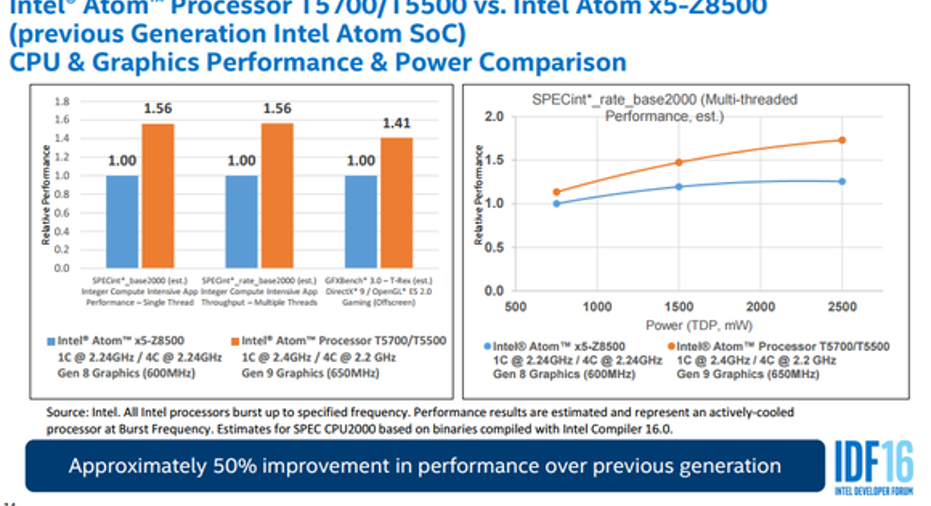Intel Corporation Reveals Next-Generation Atom Processor

Image source: Intel.
At its annual developer forum, microprocessor giant Intel (NASDAQ: INTC) talked about its next-generation Atom processor core, code-named Goldmont. Although the Atom family had primarily been interesting to investors because it was at the heart of the company's (failed) mobile applications processor efforts, the cores are still useful in a number of different markets including the Internet of Things, low-end networking processors, and even low-cost personal computers.
To that end, it's important that the company keep making significant performance and power enhancements to its Atom processor cores. Intel's 2013 Atom core, Silvermont, was a significant improvement over its prior-generation Atom core, and allowed the company to build credible offerings in a number of segments.
The company's 2014-2015 Atom core, code-named Airmont, was a very modest improvement over Silvermont. However, it looks as though with this year's Goldmont core, the company is bringing some hefty performance enhancements to the table.
Massive jump in per-core performance
Here is a slide illustrating the performance and power of the prior-generation Airmont core and upcoming Goldmont core in SPECint_base2000 (once an industry-standard test of CPU performance):
Image source: Intel.
According to the slide, a Goldmont core running at 2.4GHz offers 56% more performance than an Airmont core running at 2.24GHz. A quad-core Goldmont with all cores at 2.2GHz also offers 56% more performance than a quad-core Airmont running at 2.24GHz.
This means that, at least in SPECint_2000, Goldmont is substantially faster than Airmont, implying that the new core is substantially enhanced from the prior-generation core.
Looks good, but Intel can't let up
The main problem with Atom processor cores is simplythat Intel doesn't release chips in a timely fashion. Products based on the Goldmont CPU core were originally supposed to come out in the 2015 time frame, targeting smartphones, tablets, and low-cost PCs. Intel's Atom-based networking chips have also been neglected, with its current product line still based on the Silvermont architecture manufactured in the company's 22-nanometer process.
Intel should be able to assemble system-on-a-chip products, which integrate CPU cores and other components to make a complete product, in a more rapid fashion. Clearly there is some issue within the companythat it needs to remedy.
What I would like to see is the company releasing products based on successive Atom cores at a yearly clip. That means products based on the post-Goldmont Atom in the second half of 2017, products based on the successor to that in the second half of 2018, and so on.
If Intel can do that, then the company's businesses that rely on the Atom core should be in pretty good shape, particularly if the company continues to make significant generation-over-generation strides in core performance.
However, if the company's product releases continue to be as unpredictable as they have been over the last couple of generations, then it may be difficult for those businesses to achieve the growth and profitability that the company hopes.
A secret billion-dollar stock opportunity The world's biggest tech company forgot to show you something, but a few Wall Street analysts and the Fool didn't miss a beat: There's a small company that's powering their brand-new gadgets and the coming revolution in technology. And we think its stock price has nearly unlimited room to run for early in-the-know investors! To be one of them, just click here.
Ashraf Eassa owns shares of Intel. The Motley Fool recommends Intel. Try any of our Foolish newsletter services free for 30 days. We Fools may not all hold the same opinions, but we all believe that considering a diverse range of insights makes us better investors. The Motley Fool has a disclosure policy.



















